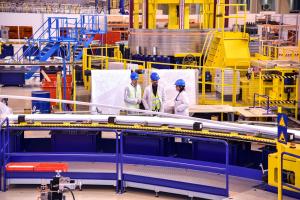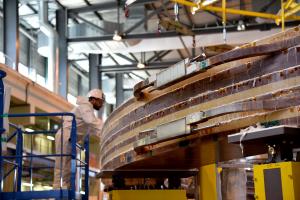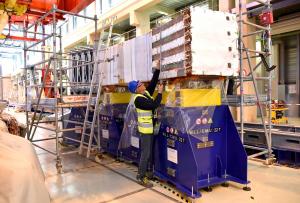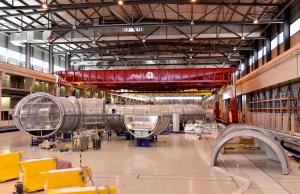Lots happening
Activity is underway in all areas of Europe's 257-metre-long winding facility, as the elements of poloidal field coil #5 (PF5) are advancing through the impregnation and stacking phases, and the winding tables have begun to turn again for PF2.
Cold testing: At the end of the manufacturing process, the completed coil is placed into a toroidal vacuum chamber (or "cryostat") and cooled to cryogenic temperature in order to monitor thermal stresses and detect potential leaks in the helium piping. The large cryostat for PF5 and PF2 is already assembled (background); a smaller one is under construction in the foreground for PF6—the 10-metre-in-diameter coil that is being manufactured in China under a contract from Europe. PF6 is expected to be delivered to ITER in November.





